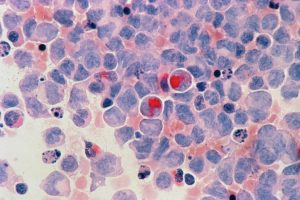That email has just hit your inbox...it's from the conference you've been eager to get to – and yes! Your abstract has been accepted! A poster presentation!
Now the work begins. Whether its your first poster, or your tenth, creating an effective poster can be hard work. Luckily, we have some tips to make the creative process a bit easier:
1. Read those conference guidelines!
We can’t emphasise this point enough. Make sure you are aware of the guidelines around posterboard size, your allocated poster number and the times for the poster sessions.
Check whether there are restrictions on a poster being portrait or landscape. You don’t want to find yourself hanging your beautifully crafted landscape poster on a board designed for portrait posters (your neighbours will probably not appreciate your poster overhanging into their territory)!
2. Determine your content
Two key questions to ask yourself when drafting the content of your conference poster are:
* Who is your audience?
* What is your narrative?
Deciding how much background information to include, or the degree of complexity that can be included, is partly determined by the conference audience. Determining whether the conference is broad, or more targeted and niche will help guide your content.
Writing a long story is often easier than writing a short story. Condensing information, yet retaining the same message, takes longer and requires more skill. Sketching an outline of your poster to see how text and images sit together is a good next step. What needs to be expressed in words? What can be expressed in graphs or illustrations?
Be mindful about how the eye tracks over the poster. Your layout should follow the natural pathway of the eye (down columns and along rows).
A general rule of thumb is to cover the following components:
Title – (make this catchy with relevant keywords) and author list and affiliations
Introduction/Background – be concise and only include essential information needed to understand the project. Having the project aim in a separate subsection so it is clearly seen is a good strategy.
Methods – again, keep it concise. No need for detailed protocols. Incorporating bullet points and flow diagrams can be quite effective here.
Results – only present the data that is relevant to your conclusion. This is where you will get the most use of graphs and charts to summarise your key results.
Conclusion – this should be a short summary of your key results and what it means in the context of your research. You should aim to keep your language simple and avoid lengthy sentence structures 1-2 short sentences max!
3. Combining the arts with the science
Now is not the time to downplay the adage of a picture is worth a thousand words. Research has shown us time and again, the power that visual aids have in engaging audiences.
Creating a visually aesthetic poster doesn’t just refer to your graph style, or how many figures you have on your poster. Whilst those are important elements, so too is the overall layout, colour palette, and the use of white space to create a balanced design.
So now is your time to be creative…but not too creative. Often sticking with the tried-and-true works best for a reason. An example is to choose fonts that are easily readable, classics such as Arial, Helvetica and Times New Roman are all popular. Comic Sans and Impact may appeal to your inner creative, but the ability to read your poster at a distance will be greatly diminished.
On the topic of reading at a distance you want your poster to be legible from about 2-3 metres away. For font size, a general rule of thumb for an A0 poster is:
* Titles size 80-96 pt
* Headings size 40-45 pt
* Text size 30-36 pt
* Figure captions size 24-28 pt
There is no shortage of templates out there for your poster design, however a good starting point is the rule of thirds. This is a popular design technique where you break your document up using a grid of 3 columns by 3 rows, and place key images of interest at the intersections e.g. your primary result, a methods figure, even your title. Effective placement of these elements helps keep your audience engaged long enough for them to digest what your research is all about.
Speaking about audience engagement…
4. Engage with your audience
Most conferences have a dedicated poster session where presenters are expected to hang around their posters and answer any questions. This is a great opportunity to network and chat about your research in a more informal setting than a scheduled oral session.
Have a short spiel prepared that captures the most important points of your poster. Think of it as an elevator pitch, short (1-2 mins) and memorable (1 or 2 key results).
And finally, if you take any advice away from this blog, it’s this: definitely do not, under any circumstances, just enlarge your conference abstract to poster size for display. Believe it or not, we have seen this…more than once!
If you feel like you’re stuck in poster purgatory, the team at Elion is here to help. We are skilled at transforming research results into conference posters that tell your research story and capture the attention of your audience. Have a conference poster in mind? Get in touch.






